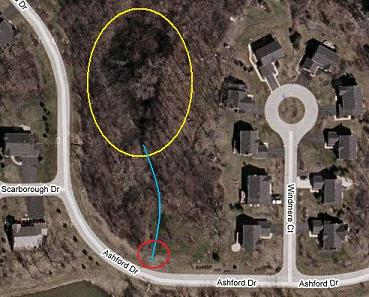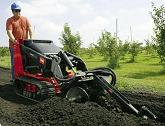 The swamp itself is located between Windmere Court and Ashford Drive by the entrance to Scarborough Drive. In the aerial view, the swamp is outlined by the yellow oval. You can see the dark area inside the oval that depicts the swamp itself. When we moved in around 1997, there was no swamp in our backyard, but after some beautiful landscaping was completed in the common area along Ashford Drive that prevented the natural flow of the water (outlined in blue) to the culvert at Ashford drive (outlined in red).....the water really had nowhere to go.
The swamp itself is located between Windmere Court and Ashford Drive by the entrance to Scarborough Drive. In the aerial view, the swamp is outlined by the yellow oval. You can see the dark area inside the oval that depicts the swamp itself. When we moved in around 1997, there was no swamp in our backyard, but after some beautiful landscaping was completed in the common area along Ashford Drive that prevented the natural flow of the water (outlined in blue) to the culvert at Ashford drive (outlined in red).....the water really had nowhere to go.
A Job for Power Tools (well almost...)
After much contemplation and advice, Tom and I devised a plan to re-trench the natural path from the swamp to the culvert. Given there was about 200 linear feet of trenching to be done, we looked into some help from a power trencher. The obvious tool for the job was a Toro Dingo with the hydraulic trench attachment.  We had it rented for 4 hours, given the estimate of 100 feet of trenching per hour, we gave ourselves 2 extra hours just in case. We chose Saturday June 2 to execute, at a point where the swamp was about at its highest level. Trenching through the landscaped tall grassy area went fairly smooth, but moving into the soft moist dirt, we ran into problems.
We had it rented for 4 hours, given the estimate of 100 feet of trenching per hour, we gave ourselves 2 extra hours just in case. We chose Saturday June 2 to execute, at a point where the swamp was about at its highest level. Trenching through the landscaped tall grassy area went fairly smooth, but moving into the soft moist dirt, we ran into problems.
The treads of the 2000 pound Dingo dug deep into the dirt to the point where I caused it to be immobilized. Luckily, Tom is an educated mechanical engineer and was able to deploy a series of levers and ramps that got the Dingo moving again. We used our additional 2 hours of slack but returned the Dingo on time. The balance of the 100 linear feet of trenching was then done by hand with shovels and axes.
By the end of the day, 1.5 feet of water was drained from the swamp directly into the culvert, following the natural flow once again. At a point when the path to the swamp is a little dryer, we will need to re-trench the path and add some gravel along the path so that the water will continue to have an unobstructed flow to the culvert.
